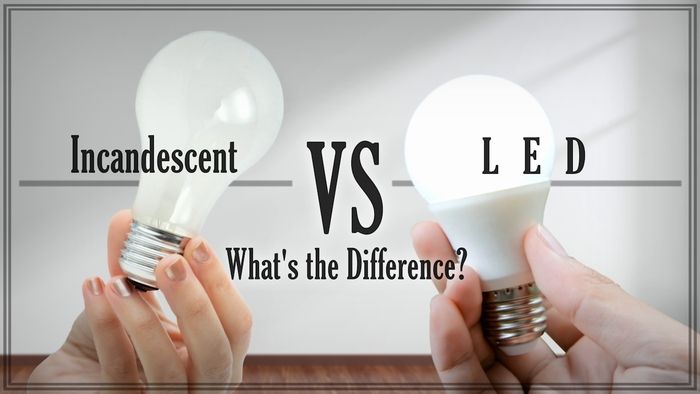Lighting is not just about illumination—it sets the mood, influences productivity, and plays a key role in energy efficiency. Whether you’re choosing fixtures for a home, office, or large commercial space, understanding how light behaves and the technology behind it is essential. Two of the most important topics in modern lighting are Correlated Color Temperature (CCT) and the debate around LED vs incandescent lighting.
In this detailed guide, we’ll explore how LED CCT helps you create the perfect lighting environment, why CCT matters in design, and how LED technology has evolved to outperform incandescent lighting in nearly every aspect.
What is Correlated Color Temperature (CCT)?
Correlated Color Temperature (CCT) is a measurement that describes the color appearance of light emitted by a lamp, expressed in Kelvin (K). It tells you whether the light will appear warm, neutral, or cool.
- Warm White (2700K – 3000K): Produces a cozy, yellowish glow similar to incandescent bulbs. Ideal for bedrooms, living rooms, and restaurants.
- Neutral White (3500K – 4100K): Balanced white light often used in offices, retail spaces, and classrooms.
- Cool White / Daylight (5000K – 6500K): Crisp, bluish light that enhances visibility and focus. Perfect for warehouses, hospitals, and outdoor lighting.
Understanding LED CCT is crucial because it allows users to tailor lighting to match the functionality of a space. Unlike traditional bulbs, LED fixtures often come with adjustable CCT options, giving you the flexibility to change color tones as needed.
Why CCT Matters in Lighting Design
The right correlated color temperature can dramatically change how people feel in a space:
- Comfort & Ambiance: Warm tones make a space inviting, while cooler tones enhance alertness.
- Productivity: Offices often use neutral to cool lighting (3500K–5000K) to keep employees focused.
- Retail & Hospitality: Warm lighting enhances comfort, while neutral tones highlight product details.
- Healthcare & Industrial: Bright, cool LED CCT improves accuracy, safety, and visibility.
By choosing the right LED CCT, businesses and homeowners can strike a balance between aesthetics, functionality, and energy efficiency.
LED vs Incandescent: A Detailed Comparison
For decades, incandescent bulbs were the standard in homes and businesses. However, with rising energy costs and sustainability concerns, LEDs (Light Emitting Diodes) have revolutionized lighting.
Let’s break down the LED vs incandescent debate:
1. Energy Efficiency
- Incandescent: Only about 10% of energy is converted to light—the rest is wasted as heat.
- LED: Converts up to 90% of energy into light, consuming far less electricity.
Verdict: LED wins by a huge margin.
2. Lifespan
- Incandescent: Average lifespan is 1,000 hours (about 1 year with daily use).
- LED: Can last 25,000–50,000 hours (10+ years).
Verdict: LEDs drastically reduce replacement costs.
3. Light Quality & CCT Options
- Incandescent: Always warm (around 2700K), with limited flexibility.
- LED: Wide range of CCT options (2700K–6500K), with some fixtures offering tunable white technology.
Verdict: LEDs provide more versatility in color temperature.
4. Environmental Impact
- Incandescent: High carbon footprint due to energy use and frequent replacements.
- LED: Eco-friendly, mercury-free, and highly recyclable.
Verdict: LEDs support sustainability goals.
5. Cost Factor
- Incandescent: Low upfront cost but expensive in the long run due to energy waste and replacements.
- LED: Higher upfront cost, but long lifespan and low energy bills provide significant savings.
Verdict: LEDs are more cost-effective over time.
The Role of LED CCT in Modern Lighting
One of the biggest advantages of LED lighting is its adaptability. LED CCT technology allows you to choose or even adjust the color temperature for different applications:
- Residential Use: Create a warm, cozy feel in living spaces, while using cooler tones in kitchens or bathrooms.
- Commercial Spaces: Offices benefit from cooler CCTs for productivity, while reception areas use warmer tones for a welcoming atmosphere.
- Retail Environments: Adjustable CCT helps highlight products—warmer tones for fashion retail, cooler tones for electronics.
- Outdoor Applications: Cool white CCT enhances security and visibility in streets, parking lots, and warehouses.
This flexibility is why LED lighting is now the gold standard across industries.
LED vs Incandescent: Case Studies
Residential Example
A homeowner replaces 20 incandescent bulbs (60W each) with 20 LED bulbs (10W each).
- Energy Saved: 1000W → 200W total usage.
- Savings: Up to 80% on electricity bills.
- CCT Benefits: Ability to choose between warm white for bedrooms and daylight for kitchens.
Commercial Example
A warehouse upgrades from 500 incandescent high bays to LED high bay fixtures.
- Result: Reduced energy bills by 70%, improved worker productivity with 5000K LED CCT, and cut maintenance costs.
These real-world examples highlight how LEDs dominate in the LED vs incandescent debate.
Future of LED Lighting and CCT
The future of lighting lies in smart LEDs with tunable CCT. Features like:
- Human-Centric Lighting: Mimics natural daylight to support circadian rhythms.
- Smart Controls: Adjust CCT and brightness via apps or automation systems.
- Sustainability Goals: As more regions phase out incandescent bulbs, LEDs will become the universal standard.
With continuous innovation, LEDs will not only replace old technologies but also shape how we experience light in our daily lives.
Conclusion
When it comes to correlated color temperature (CCT) and the debate of LED vs incandescent, the choice is clear.
- LED CCT gives unmatched flexibility in choosing warm, neutral, or cool tones.
- LEDs outperform incandescent bulbs in energy efficiency, lifespan, versatility, cost savings, and sustainability.
- From homes to warehouses, LEDs offer the right solution for every application.
Switching to LED is not just a cost-saving decision—it’s a step toward smarter, healthier, and more sustainable lighting.



